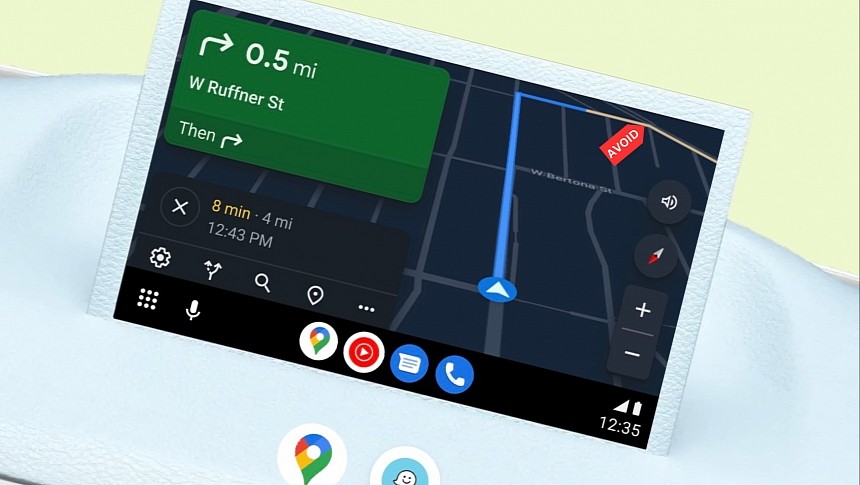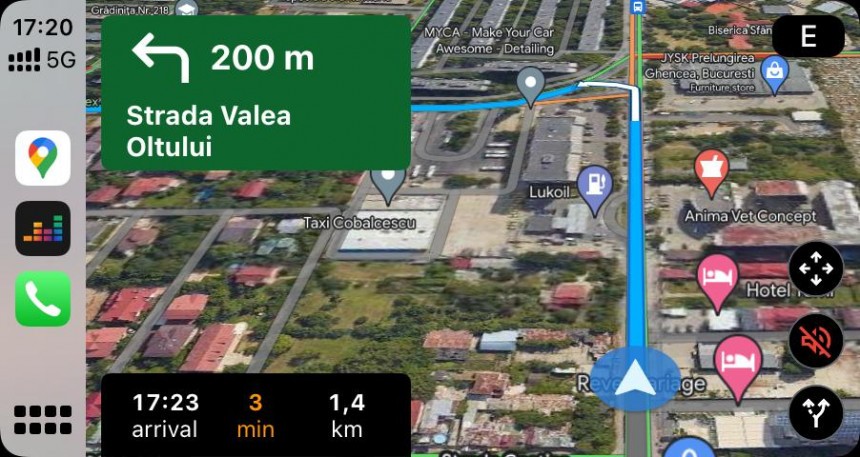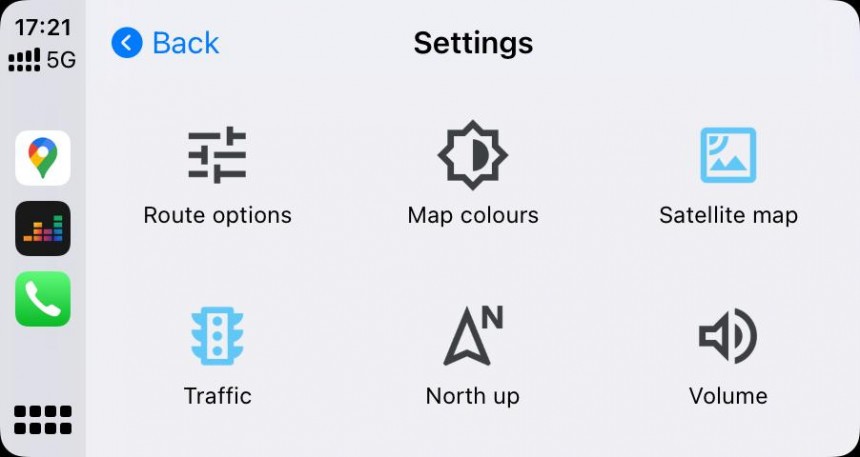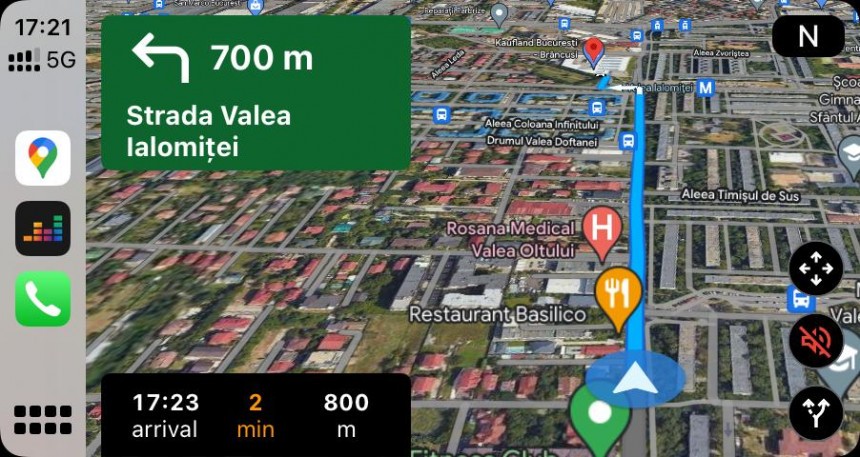Navigation apps, be they Google Maps, Apple Maps, or Waze, sport advanced routing engines that make every minute you spend behind the wheel safer and more convenient.
These applications look for a route to a user-defined destination and then offer turn-by-turn suggestions to help drivers reach the location.
They also offer alternative routes, so if you're not pleased with the main suggestion, you can look for other routes to drive to the destination. Users can configure the route by avoiding highways, toll roads, unpaved roads, and ferries, but all these applications lack an essential feature.
Users must be allowed to avoid certain roads when setting up navigation. Here's why this is such a critical option that must be added to navigation apps right now.
First, it's important to understand how navigation apps work.
Google Maps, Apple Maps, and Waze try to find the fastest route to the destination using multiple factors, including the distance to the address and traffic conditions. The software determines the shortest route to the destination and calculates the travel time. They compare the shortest routes with real-time traffic conditions, eventually determining the fastest way to arrive at a destination.
Google Maps also includes an option to navigate to a destination with an eco-friendly route. When this mode is enabled, Google Maps takes into account more factors for a suggested route, including the road incline and historical traffic patterns. Users are provided with the fastest and the eco-friendly route to choose the best option, especially if the ETA is significantly different.
In all cases, navigation apps suggest routes after considering every road you can use to reach the destination. This leads me to the option that all apps should offer.
Every morning, when I drop my kid at the kindergarten on my way to the office, I use Waze and Google Maps to find the fastest route. The routes I use every day are mostly similar, with minor adjustments to avoid traffic jams. However, one of the roads both navigation apps include in their routing is extremely narrow, so if you drive a larger vehicle, it's quite a challenge to get past incoming traffic. The road is a nightmare, and I can tell it makes other drivers anxious by the speed of their vehicles. Everybody goes substantially slower than the allowed limit as they don't want to scratch or hit their cars.
As a result, I'd want Waze, Google Maps, Apple Maps, and all the other navigation apps to let me exclude this road from their suggested routes. However, they keep suggesting this road as a shortcut because it's typically clear and not packed with cars, simply because many drivers avoid it due to how narrow it is. People using navigation apps end up using it, though.
Navigation apps need an option specifically for this purpose, and someone on the Waze suggestion platform suggests several approaches to let users configure a road to avoid when generating a route. The easiest is simply long-pressing a road and tapping an option to remove it from a suggested route, at this point, the navigation app should look for an alternative that doesn't include the defined road.
Google, Apple, and other navigation software developers can introduce more advanced settings and allow users to select a road to avoid for the suggested route or all future routes they'll use with the app. It's an easy way to avoid sending users on a road they don't feel comfortable using, both now and in the future.
Unfortunately, navigation software companies have ignored the requests in this direction despite such a feature making perfect sense. They wouldn't have to significantly alter their routing engines, as they could treat the defined road as a closed section of the route. When Google Maps, Waze, and Apple Maps generate routes, they avoid closed roads, so you're often provided with a detour that doesn't take more than a couple of minutes. It's all because the navigation engine tries to avoid closed roads, and the same approach should be used for a possible "avoid road" option.
Avoiding a road makes sense, even from a safety perspective. Users who don't feel comfortable using a specific road are prone to driving errors, often driving significantly below the limit and causing disruption in the traffic flow. Navigation apps are supposed to make traffic safer, especially by making everything more predictable. They show turn-by-turn guidance to let drivers know where to take a turn, turning every minute they spend behind the wheel into a more convenient experience.
Not letting them avoid a road they hate does the opposite, so fingers crossed for navigation software companies to explore improvements in this direction. For now, the only way to avoid a road you don't like is to simply not use it, eventually forcing the navigation app to reroute and suggest an alternative to reach your destination.
They also offer alternative routes, so if you're not pleased with the main suggestion, you can look for other routes to drive to the destination. Users can configure the route by avoiding highways, toll roads, unpaved roads, and ferries, but all these applications lack an essential feature.
Users must be allowed to avoid certain roads when setting up navigation. Here's why this is such a critical option that must be added to navigation apps right now.
Google Maps, Apple Maps, and Waze try to find the fastest route to the destination using multiple factors, including the distance to the address and traffic conditions. The software determines the shortest route to the destination and calculates the travel time. They compare the shortest routes with real-time traffic conditions, eventually determining the fastest way to arrive at a destination.
Google Maps also includes an option to navigate to a destination with an eco-friendly route. When this mode is enabled, Google Maps takes into account more factors for a suggested route, including the road incline and historical traffic patterns. Users are provided with the fastest and the eco-friendly route to choose the best option, especially if the ETA is significantly different.
In all cases, navigation apps suggest routes after considering every road you can use to reach the destination. This leads me to the option that all apps should offer.
Every morning, when I drop my kid at the kindergarten on my way to the office, I use Waze and Google Maps to find the fastest route. The routes I use every day are mostly similar, with minor adjustments to avoid traffic jams. However, one of the roads both navigation apps include in their routing is extremely narrow, so if you drive a larger vehicle, it's quite a challenge to get past incoming traffic. The road is a nightmare, and I can tell it makes other drivers anxious by the speed of their vehicles. Everybody goes substantially slower than the allowed limit as they don't want to scratch or hit their cars.
Navigation apps need an option specifically for this purpose, and someone on the Waze suggestion platform suggests several approaches to let users configure a road to avoid when generating a route. The easiest is simply long-pressing a road and tapping an option to remove it from a suggested route, at this point, the navigation app should look for an alternative that doesn't include the defined road.
Google, Apple, and other navigation software developers can introduce more advanced settings and allow users to select a road to avoid for the suggested route or all future routes they'll use with the app. It's an easy way to avoid sending users on a road they don't feel comfortable using, both now and in the future.
Unfortunately, navigation software companies have ignored the requests in this direction despite such a feature making perfect sense. They wouldn't have to significantly alter their routing engines, as they could treat the defined road as a closed section of the route. When Google Maps, Waze, and Apple Maps generate routes, they avoid closed roads, so you're often provided with a detour that doesn't take more than a couple of minutes. It's all because the navigation engine tries to avoid closed roads, and the same approach should be used for a possible "avoid road" option.
Not letting them avoid a road they hate does the opposite, so fingers crossed for navigation software companies to explore improvements in this direction. For now, the only way to avoid a road you don't like is to simply not use it, eventually forcing the navigation app to reroute and suggest an alternative to reach your destination.










